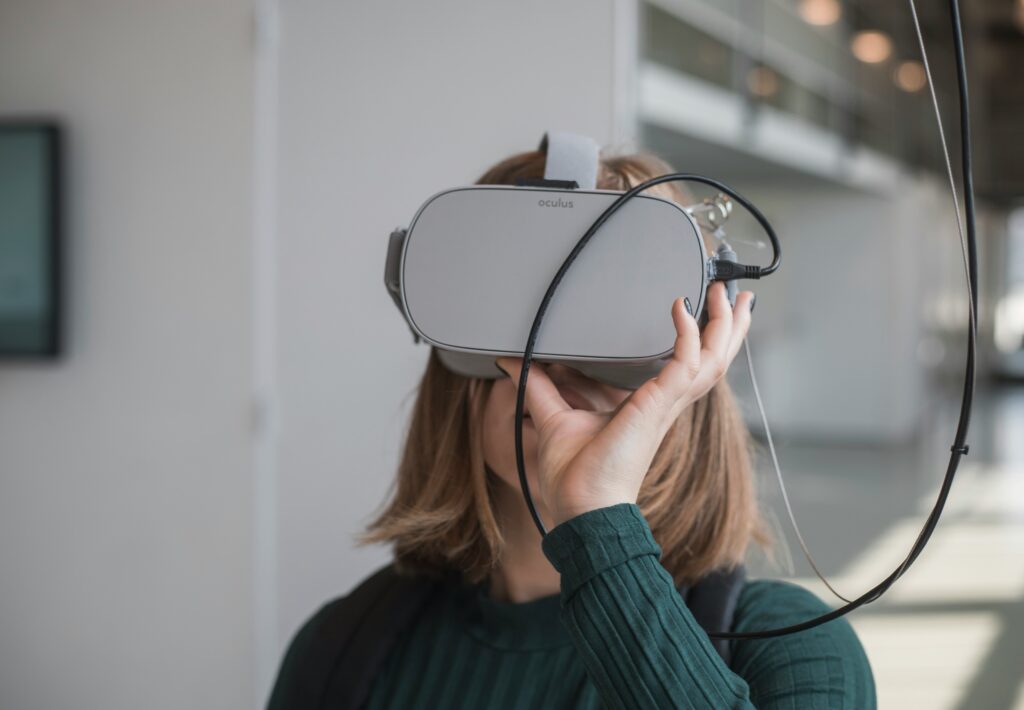Introduction: In the realm of digital innovation, few technologies hold as much promise and fascination as augmented reality (AR) and virtual reality (VR). These immersive technologies have the power to transport users to new worlds, enhance their surroundings, and redefine the way we interact with digital content. In this article, we delve into the captivating realms of AR and VR, exploring their applications, advancements, and the transformative impact they’re poised to have on various industries.
1. Understanding Augmented Reality and Virtual Reality: Augmented reality (AR) overlays digital content onto the real world, enriching our perception of reality with additional information, graphics, or interactive elements. This technology can be experienced through smartphones, tablets, smart glasses, and heads-up displays, allowing users to interact with digital content in real-world environments. Virtual reality (VR), on the other hand, immerses users in entirely virtual environments, creating a sense of presence and immersion through specialized headsets and motion-tracking technology. Together, AR and VR offer a spectrum of experiences that range from enhancing our physical surroundings to transporting us to fantastical worlds beyond our imagination.
2. Applications in Entertainment and Gaming: In the realm of entertainment and gaming, AR and VR have opened up new frontiers of immersion and interactivity. VR gaming, in particular, has seen explosive growth in recent years, with platforms like Oculus Rift, HTC Vive, and PlayStation VR offering gamers the opportunity to step into fully immersive virtual worlds. From thrilling adventures to captivating storytelling experiences, VR gaming has redefined what it means to play and engage with interactive entertainment. Similarly, AR has transformed the way we experience live events, with applications ranging from interactive museum exhibits to location-based mobile games like Pokémon GO, which overlay digital creatures onto real-world environments.
3. Revolutionizing Education and Training: AR and VR are also revolutionizing the way we learn and train, offering immersive and interactive experiences that enhance comprehension and retention. In education, AR and VR technologies can bring textbooks to life, allowing students to explore virtual models of historical landmarks, conduct virtual science experiments, or travel back in time to pivotal moments in history. In the realm of corporate training, VR simulations offer a safe and cost-effective way for employees to practice real-world scenarios, from surgical procedures to hazardous workplace environments, without risking injury or damage. By providing hands-on learning experiences in a virtual environment, AR and VR have the potential to democratize education and training on a global scale.
4. Transforming Healthcare and Medicine: In the field of healthcare and medicine, AR and VR are revolutionizing patient care, medical training, and surgical procedures. Surgeons can use AR overlays to visualize patient anatomy in real-time during complex surgeries, improving precision and reducing the risk of complications. Medical students can practice surgical techniques in a virtual environment, gaining valuable experience without the need for cadavers or live patients. Additionally, AR applications are being used to assist patients with physical therapy, rehabilitation, and pain management, offering personalized and immersive experiences that enhance recovery and well-being.
Conclusion: Augmented reality (AR) and virtual reality (VR) represent a paradigm shift in how we interact with digital content, offering immersive, interactive, and transformative experiences across a wide range of industries. From entertainment and gaming to education, healthcare, and beyond, AR and VR have the power to revolutionize the way we learn, work, and play. As technology continues to evolve and adoption rates rise, the possibilities for AR and VR are limitless, promising a future where the boundaries between the digital and physical worlds blur, and imagination knows no bounds.

